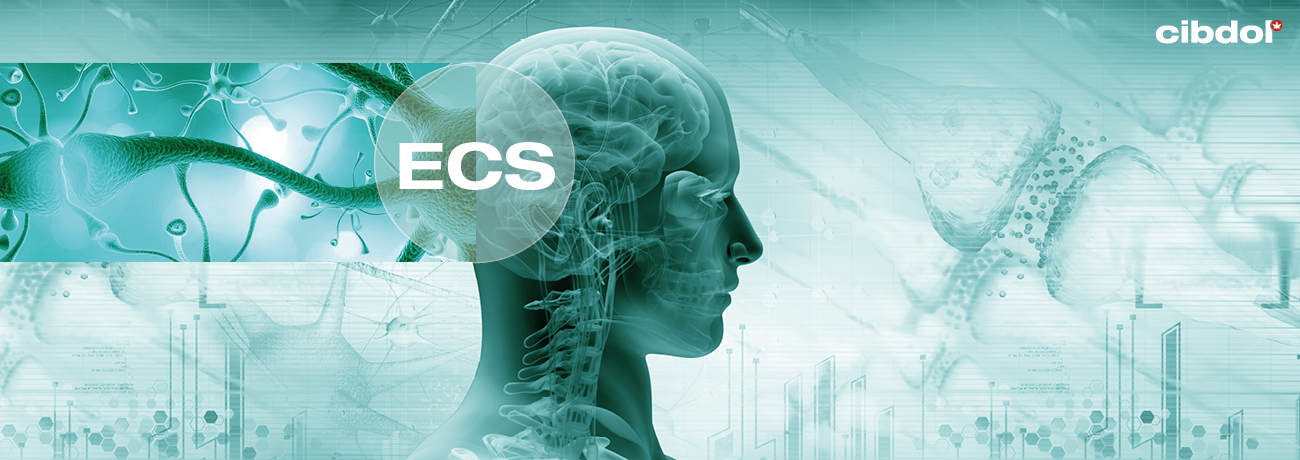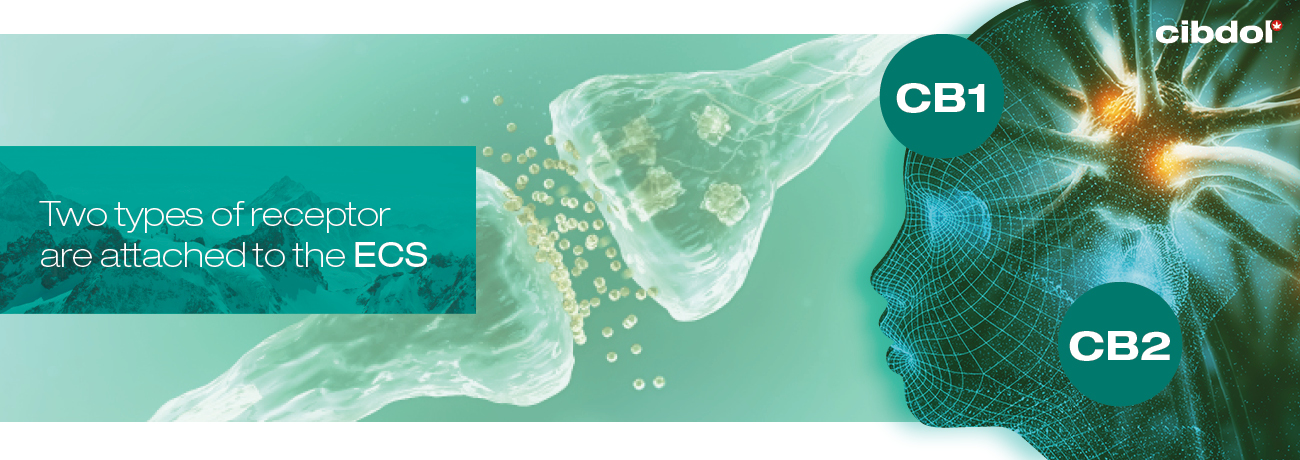How Does The Endocannabinoid System Work?

The endocannabinoid system is a regulatory system linked to major organs, the immune and nervous systems, and areas of the brain. The ECS plays a role in nearly all primary physiological functions. Scientists continue to uncover that its maintenance is essential to homeostasis, the body’s ability to maintain a state of internal balance. Before we get too technical though, let's start with how and when the ECS was discovered.
The discovery of the endocannabinoid system (ECS)
When it comes to understanding how the human body works, usually the “system” is discovered before the receptors and chemicals that trigger it. In the case of the endocannabinoid system, the opposite is true. In 1990, scientists would uncover and isolate the CB1 receptor, before CB2 receptors were found a few years later.
Around the time CB2 receptors were identified, American researchers working in Jerusalem uncovered the endocannabinoid anandamide. Every discovery was a step closer to elucidating the one system that linked all the previous components together, the endocannabinoid system. In pursuit of more endocannabinoids, scientists would finally unearth the ECS, a system capable of monitoring molecular signalling throughout the body.
While it may have taken a while to get to the bottom of why all these receptors and chemicals existed, our understanding of the ECS has grown significantly in recent years. So much so that it is believed the ECS is vital in supporting the body’s ability to balance its internal functions. Preliminary studies[1] point to a deficiency in endocannabinoid levels as a precursor to several debilitating diseases.
Synthetic cannabinoids, phytocannabinoids, and endocannabinoids all influence the ECS
At its core, the ECS is simple in how it operates. While monitoring the body’s internal systems, it will facilitate the release of endocannabinoids if it detects an imbalance that it can help with. These endocannabinoids then bind to receptors spread throughout the body, triggering a wide range of biological functions. Many factors feed into the effectiveness of our ECS, but a significant consideration is the production or supplementation of the chemical compounds needed to bind with receptors.
We have already mentioned the endocannabinoid anandamide, which, alongside a handful of other internally produced chemicals, are specifically designed to interact with the ECS. But it isn’t just these compounds that can bind with the receptors linked to the ECS. Phytocannabinoids (plant-derived cannabinoids) have a similar molecular structure to endocannabinoids, but they exist outside the body. The hemp plant is one of several species that contains an abundance of phytocannabinoids like CBD, CBC, and CBG. When consumed, they too can trigger reactions via CB1 and CB2 receptors.
Finally, we have synthetic cannabinoids. These are human-made compounds that replicate the molecular structure of both phytocannabinoids and endocannabinoids. Synthetic cannabinoids have been specifically designed to target certain receptors. They are often overwhelming for the body and can lead to adverse side effects in some scenarios.

Two types of receptor are attached to the ECS
We know about the system, and the chemicals needed to trigger a reaction—now we need a way to connect the two. This is achieved through the previously mentioned CB1 and CB2 receptors. The title of either receptor correlates to which types of chemical it can bind with. Phytocannabinoids like THC have a preference for CB1, while CBD shows a stronger affinity for CB2 receptors amongst several others. In these scenarios, the cannabinoid receptor sends a signal to the part of the body it is connected to, prompting the affiliated cells to act.
The majority of CB1 receptors are found in areas of the brain linked to mood, emotion, and appetite, while CB2 receptors are located throughout our immune and central nervous systems. There are areas where both receptors may be present, like our GI tract, but in this case, either receptor is responsible for triggering a different function.
Both CB1 and CB2 receptors are present throughout the body
We weren’t joking when we said that receptors could be found in virtually all major parts of the human body. Below is a list of some, but by no means all, of the areas both CB1 and CB2 receptors can be found.
• CB1: brain, lungs, vascular system, muscles, GI tract, reproductive organs and liver
• CB2: skin, bones, spleen, immune system, pancreas and brainstem
More importantly, these are just the areas of the body that scientists have been able to pinpoint. Research[2] into the ECS is ongoing, and as such, discoveries are being made all the time—there is no escaping the influence of the ECS.
The ECS uses a lock and key principle
Naturally, you may assume that for the body to know which chemical should bind with which receptor, a complicated process needs to take place. On the contrary, the answer is thankfully a lot simpler. Every chemical compound, whether it is a phytocannabinoid or an endocannabinoid, has a particular profile or shape. This ensures that only certain compounds can interact with the right type of receptor. In the same way only your front door key will fit the main entrance to your house, only CBD will interact with specific receptors found in the digestive system, for example. In this example, CBD has a shape that fits the lock of the receptor. It is possible for other types of cannabinoids to fit the same lock, but they need to have a similar chemical structure.
Examples of the ECS’ influence grow by the day
With the basics of the ECS covered, all that remains is detailing what happens when you unlock a receptor. These examples are not exclusive, as research is ongoing. However, what studies do show is that, so far, the effects of the ECS extend to:
• Memory
• Appetite
• Energy balance
• Metabolism
• Stress (including regulating anxiety)
• Immune function
• Sleep
• Exercise
• Female reproduction
We are still a long way from fully understanding the potential of the ECS. Not only can it be used to promote favourable biological reactions, but by blocking receptors, it is possible to limit specific functions. This can have negative connotations though, much like the use of certain synthetic cannabinoids. So far, what we do understand shows us that consumption of naturally produced cannabinoids is the best way to promote beneficial reactions from our ECS.
[1] Russo, E. B. (2016). Clinical Endocannabinoid Deficiency Reconsidered: Current Research Supports the Theory in Migraine, Fibromyalgia, Irritable Bowel, and Other Treatment-Resistant Syndromes. NCBI. https://www.ncbi.nlm.nih.gov/pmc/articles/PMC5576607/ [Source]
[2] Zou, S., & Kumar, U. (2018). Cannabinoid Receptors and the Endocannabinoid System: Signaling and Function in the Central Nervous System. NCBI. https://www.ncbi.nlm.nih.gov/pmc/articles/PMC5877694/ [Source]












